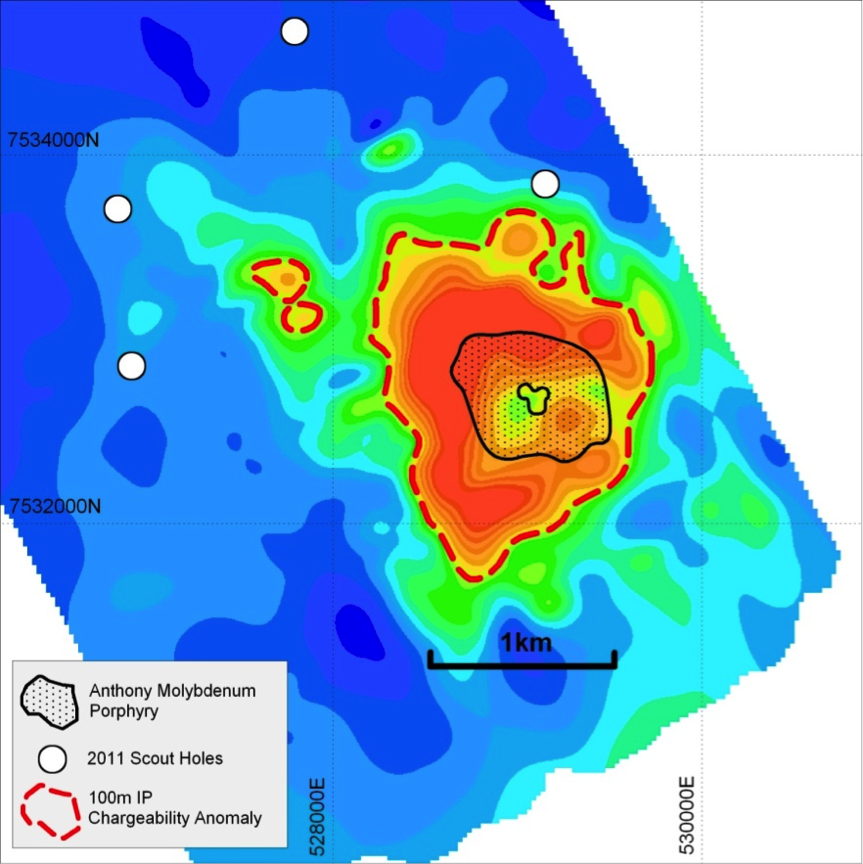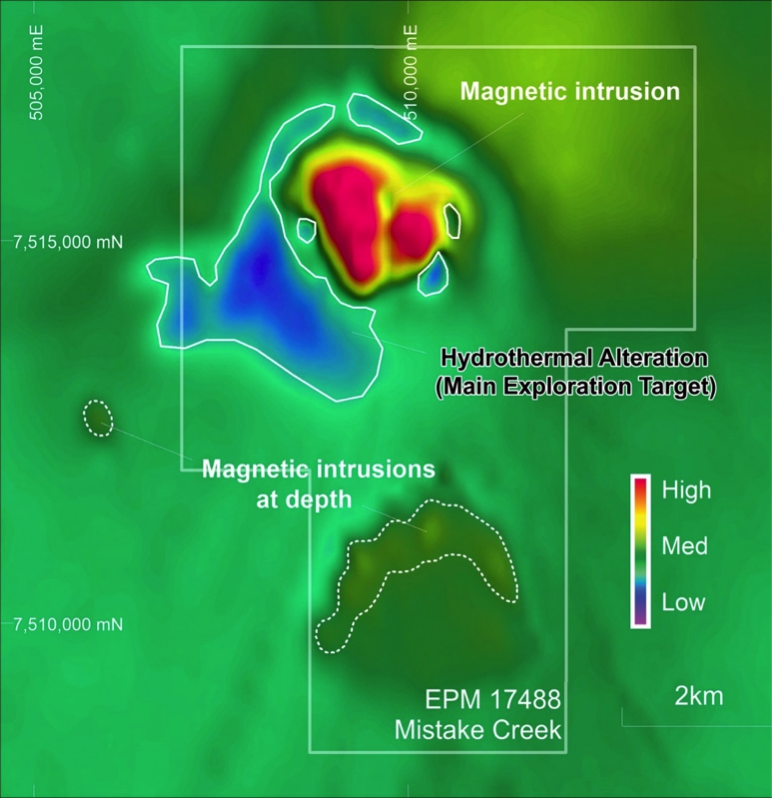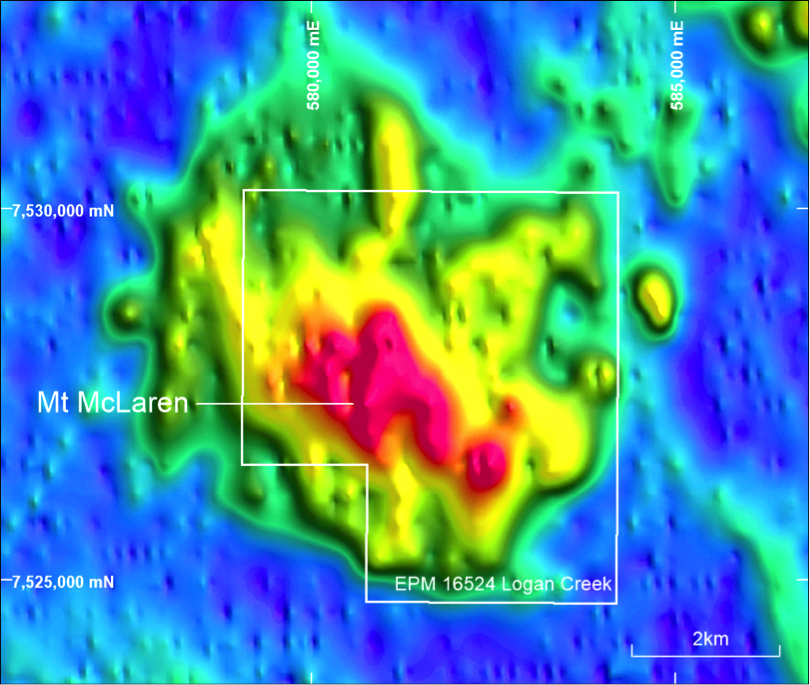





Porphyry deposits, even when buried to depths of hundreds of metres, make excellent mining targets due to their large size, simple mineralogy & processing, and the fact that they can often be bulk mined by block caving.
Successful exploration requires:

Anthony deposit: I.P. chargeability anomaly (red-orange) at 100m depth surrounding the molybdenum resource (black outline)
A large magnetic high reflects a multi-phase intrusive igneous complex. Porphyry-style quartz-sulphide veins are exposed in a small outcrop area. A large arcuate magnetic low indicates a broad zone of rock alteration - the main exploration target, untested in previous exploration. Radiometric imagery shows an arcuate potassium channel anomaly, perhaps reflecting porphyry-related potassic alteration.

Mistake Creek magnetic image. Magnetic low = likely zone of alteration = main exploration target,
not tested by drilling
Soil geochemical surveys show extensive copper- and gold-in-soil geochemical anomalies, but there has been only limited drilling, mainly shallow RC holes which have been focused on the magnetic high, not on the magnetic low (considered to represent rock alteration). RC drilling intersected elevated gold (up to 7m at 0.59 g/t Au) associated with elevated concentrations of other metals copper (Cu), molybdenum (Mo), zinc (Zn) and arsenic (As).
Mount McLaren Target (EPM 16524 Logan Creek)
Mount McLaren displays a classic porphyry signature:

Logan Creek: Radiometric potassium channel image